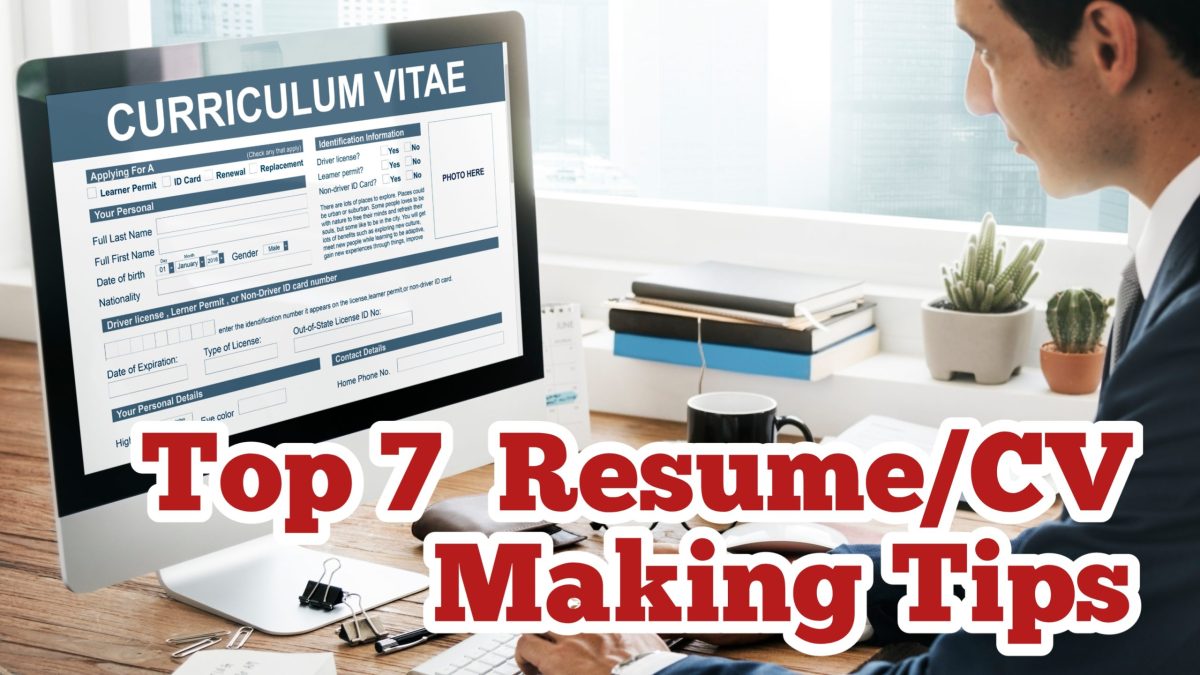CV for Dubai Jobs : A Curriculum Vitae, abbreviated as CV and derived from the Latin phrase “course of life,” serves as a comprehensive record summarizing your educational background, competencies, accomplishments, and professional history. It stands as a paramount document in aiding your job search efforts. A well-crafted CV can serve as a persuasive sales tool, significantly increasing your chances of securing the desired position. Conversely, a poorly constructed CV may hinder your prospects and leave you far from attaining your dream job. To enhance your chances of success, adhere to the following guidelines when creating your CV, ultimately increasing your likelihood of obtaining the position you seek.
- Know the Job
There is no restriction on the quantity of CVs an individual can maintain. In fact, it’s entirely acceptable to create up to 10 distinct CVs tailored for various job opportunities. For instance, if you work as an accountant and are pursuing a role with a strong emphasis on taxation, you can prioritize showcasing your tax-related skills. Similarly, if you’re a lawyer with a diverse background but are targeting a corporate position, you have the flexibility to emphasize your experience as a corporate attorney. Feel free to spotlight any skills and experiences that you believe will enhance your chances of securing the specific job you desire. However, always bear in mind the importance of maintaining honesty and integrity in your curriculum vitae, refraining from any form of embellishment.
- Basic Information
Keep in mind that a CV serves a strictly professional purpose. Unless you’re a professional chef, employers generally have no interest in your culinary preferences or the number of pets you may have. Your CV should include essential elements such as your name, contact information, educational background, professional skills, and relevant work experience. It’s perfectly acceptable to omit references from your curriculum vitae, as sharing sensitive contact details is not advisable. Opt for an appropriate and up-to-date format, and you’ll be well-prepared for your job application.
- Layout
Dos and Don’ts for Crafting Your CV:
a) Do your employer a favor by sticking to basic black and white colors. Refrain from attempting to display your colorful personality on your curriculum vitae, as it may not appear as intended when printed in black and white and could create an odd impression on a screen.
b) Don’t opt for overly fancy paper, as most employers discard it, even if you secure the job. Additionally, consider the environmental impact of using extravagant paper – it’s best to maintain an eco-conscious approach.
c) Do select a simple font. Arial, Calibri, or Times New Roman are safe choices if you’re unsure. Avoid fonts like Brush Script and Comic Sans, which can be challenging to read. Also, steer clear of fonts that may not be readily available to the employer. Ideally, opt for universally accessible fonts that offer aesthetic appeal. You can even check the company’s website to determine the font they use. Remember, seemingly trivial details can make a difference.
d) Don’t include “Curriculum Vitae” at the top of the page. Your potential employer already knows the document’s purpose. Instead, use your name as the page title. Ensure that your name is not excessively large in font size.
e) Do keep your curriculum vitae concise, aiming for a maximum of two A4 pages. Anything longer is often viewed as excessive by employers.
While there’s no rigidly fixed format, the generally accepted structure includes sections for your personal profile, employment history and experience, followed by your education and qualifications.
- The right CV type
CVs are typically categorized into two main types:
- Traditional/Chronological Curriculum Vitae: This format is the most commonly employed. It presents a chronological list of your work experience alongside your academic qualifications. It is the ideal choice when there are no gaps in your employment history.
- Functional Curriculum Vitae: A skills-based CV that emphasizes your skills and accomplishments. This format is particularly suitable when you have gaps in your employment history or are contemplating a career change into a different industry.
- Power Words
Your CV must make a strong impact. It serves as your initial introduction to the employer, and unless you handle it effectively, it might also become your final impression. To stand out, incorporate assertive language such as “achieved,” “coordinated,” and “met targets” throughout your curriculum vitae.
- Skip the picture
While you may have invested considerable effort in obtaining that photograph, refrain from including it on your CV. Employers prioritize the skills and knowledge you can contribute to their company, and your appearance, no matter how smart or friendly, is generally not a top concern. As long as you can deliver results, your physical appearance is not relevant. Therefore, omit the photo from your curriculum vitae and utilize that space for valuable content instead.
- Cover letter
Having a strong curriculum vitae might lead you to believe that securing an interview is guaranteed. While that’s certainly a positive step, it’s important to note that in approximately 90% of cases, a well-crafted cover letter plays a pivotal role in sealing the deal. A cover letter serves as an accompanying document sent alongside your curriculum vitae, designed to emphasize your skills. Instead of merely rehashing the CV’s contents, craft a personalized cover letter that succinctly explains why you possess the qualifications required for the job.
Adhering to these valuable tips is certain to secure you that coveted interview invitation. If you have additional insights or tips you’d like to contribute, please feel free to share them in the comments below.
